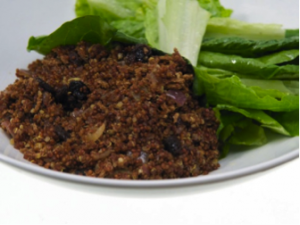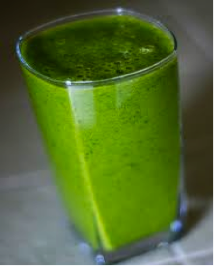
Creamy Broccoli Soup with Croutons
Ingredients:
- 2 large (1 3/4 pounds each) heads broccoli, stems peeled
- 2 tablespoons unsalted butter
- 3 tablespoons extra-virgin olive oil
- 1 large onion, coarsely chopped
- 1 quart low-sodium vegetable broth
- 4 cups water
- Salt and freshly ground pepper
- 1/2 cup heavy cream
- 1/2 cup milk
- Bite-size croutons, for serving
Directions:
Separate the broccoli stems from the heads. Measure out 3 cups of small florets and reserve. Coarsely chop the remaining broccoli. In a large pot, melt the butter in 1 tablespoon of the olive oil. Add the onion, cover and cook over low heat, stirring occasionally, until softened, about 5 minutes. Add the coarsely chopped broccoli to the pot along with the broth and water and bring to a boil. Cover and simmer over low heat until the broccoli is tender, about 20 minutes. Add 2 cups of the reserved florets, cover and simmer until barely tender, about 5 minutes.
Meanwhile, in a small skillet, heat the remaining 2 tablespoons of olive oil. Add the remaining 1 cup of florets and season with salt and pepper. Cover and cook over moderate heat until richly browned, about 6 minutes.
Working in batches, puree the soup in a blender until very smooth. Transfer the soup to a clean saucepan. Stir in the cream and milk and bring to a simmer over moderate heat, stirring a few times. Season the soup with salt and pepper and ladle into bowls. Garnish with the sautéed florets and croutons and serve.
Boosting Life Choices: Broccoli
Stalk trouble before it strikes. Broccoli is one of the true superstars of the produce bin and is one of the most healthful foods you can eat—a real nutritional powerhouse. It’s a member in good standing of the crucifer family of vegetable. It has a rich supply of vitamins and minerals–notably beta-carotene, vitamin C, folate (folic acid), and potassium–and contains the phytochemical sulforaphane, which helps reduce the risk of cancer. At least one study suggests that you can get the most anticancer power from broccoli by eating it raw, so cover all bases by enjoying it both cooked and au naturel.
And broccoli is a great source of bone-building calcium, which can reduce your chances of developing osteoporosis. And it gives the overweight a diet boost by being both low in calories and high in hunger-satisfying fiber.
Broccoli is rich in potassium, a mineral that’s credited with a lowered incidence of high blood pressure and stroke. Its high fiber content also helps lower cholesterol, which—along with the green giant’s low sodium and fat levels—lowers the risk of heart disease. Preliminary studies suggest that the vitamin C in produce such as broccoli may even head off heart disease before it starts by protecting against free radicals, unstable molecules thought to transform cholesterol into building blocks of artery-clogging plaque. Unless you drown it in cheese sauce, broccoli is (like all green vegetables) low in calories and virtually fat-free.
A close relative of cauliflower, broccoli has grown wild in Mediterranean areas for hundreds of years; domestic broccoli was first cultivated in the United States in the Twenties. Since then, it has become one of the best-selling members of the Brassica genus (which also includes cabbage, Brussels sprouts, and other so-called cruciferous vegetables).
Varieties
The most common type of broccoli sold in the U.S. is called sprouting, or Italian green, broccoli; its light-green stalks are topped by umbrella-shaped clusters of purplish-green florets. It is also known as Calabrese, after the Italian province of Calabria, where it was first grown.
Other broccoli options are:
Broccolini: a cross between broccoli and Chinese kale.
Broccoflower: a cross between broccoli and cauliflower comes in a single large head, like cauliflower, but is green rather than white.
Broccoli sprouts: a particularly concentrated source of sulforaphane. They’re expensive, but a little goes a long way.








